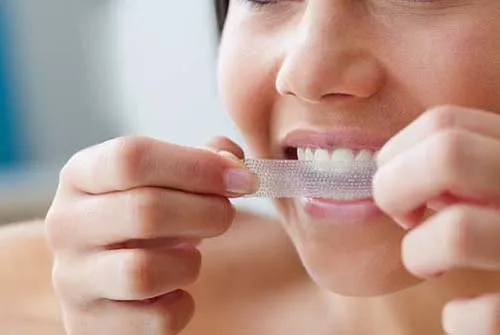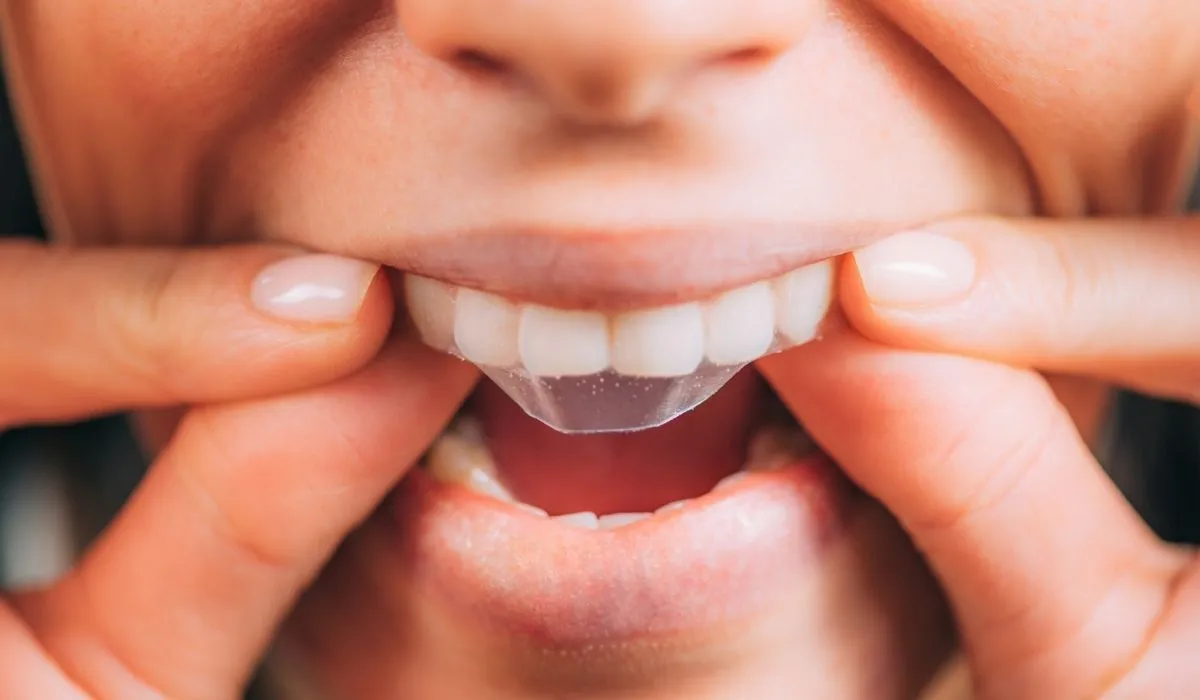Understanding Teeth Whitening Strips
Teeth whitening strips have become a popular method for achieving a brighter smile in the comfort of your own home. These strips typically contain a peroxide-based bleaching agent that helps to remove stains and discoloration from the surface of your teeth. The convenience and relatively low cost of whitening strips make them an attractive option for many. However, understanding how they work and how to use them correctly is essential to maximize their effectiveness and minimize potential side effects. Whitening strips are designed to adhere to your teeth, allowing the whitening agent to come into direct contact with the enamel. This process gradually breaks down the stain molecules, resulting in a lighter appearance.
How Teeth Whitening Strips Work
The primary active ingredient in most teeth whitening strips is hydrogen peroxide or carbamide peroxide. These chemicals penetrate the enamel and dentin of your teeth, breaking down the stains that have accumulated over time from things like coffee, tea, wine, and tobacco. The concentration of the peroxide varies depending on the product, with higher concentrations often leading to faster results but also potentially increasing the risk of sensitivity. The strips are applied directly to your teeth, ensuring close contact with the enamel. The peroxide then begins to oxidize the stain molecules, effectively lightening the color of your teeth. The duration of the treatment, typically 30 minutes to an hour, and the frequency of use, often once or twice daily, are determined by the specific product and your desired level of whitening.
Potential Side Effects of Whitening Strips

While teeth whitening strips are generally safe, they can cause side effects. The most common side effects include temporary tooth sensitivity and gum irritation. Sensitivity occurs because the peroxide can penetrate the enamel and reach the nerves in your teeth. This sensitivity usually subsides within a few days of stopping the treatment. Gum irritation can occur if the strips come into contact with your gums. To minimize these side effects, it’s crucial to follow the product instructions carefully, avoid over-application, and ensure the strips are properly positioned on your teeth, away from your gums. If you experience significant sensitivity or irritation, consider using a sensitivity-relieving toothpaste or consulting with your dentist.
Top 5 Post-Use Tips for Whitening Strips
Proper aftercare is just as important as the application process to ensure optimal results and minimize potential side effects. Here are the top 5 tips to follow after using teeth whitening strips:
Brush Gently After Using Strips
It is generally recommended to wait at least 30 minutes after using whitening strips before brushing your teeth. When you brush your teeth immediately after removing the strips, you might inadvertently remove some of the whitening agents. This will lead to a decrease in the effectiveness of the whitening process. Use a soft-bristled toothbrush and brush gently to avoid irritating your gums or causing further sensitivity. Consider using a toothpaste designed for sensitive teeth to minimize any discomfort. Avoid excessive force and focus on cleaning all surfaces of your teeth thoroughly.
Wait Before Eating or Drinking

Similar to brushing, it’s best to wait for a period after using the strips before eating or drinking anything other than water. The enamel pores are temporarily open after the treatment, and consuming food or drinks can increase the chance of staining. The longer you wait, the better, but at least 30 minutes is a good rule of thumb. If you must eat or drink, choose foods and beverages that are less likely to stain, such as white rice, chicken, or water. Avoid dark-colored liquids like coffee, tea, and red wine.
Avoid Staining Foods and Drinks
After using whitening strips, be mindful of the foods and drinks you consume, as they can easily stain your newly whitened teeth. Some of the most common culprits include coffee, tea, red wine, dark sodas, berries, and tomato-based sauces. If you do consume these items, rinse your mouth with water immediately afterward to minimize their effect. Using a straw when drinking dark-colored beverages can also help to reduce contact with your teeth. By being mindful of what you eat and drink, you can maintain your bright smile for a longer period.
Use Sensitivity Relief Products
Tooth sensitivity is a common side effect of teeth whitening. To manage this, consider using toothpaste specifically designed for sensitive teeth. These toothpastes often contain ingredients like potassium nitrate, which helps to block the pathways to the nerves in your teeth, reducing sensitivity. You can also use a fluoride rinse to strengthen your enamel. If the sensitivity is severe, your dentist may recommend a professional fluoride treatment. Applying a small amount of sensitivity relief toothpaste to your teeth before applying the whitening strips, if the product instructions allow, could also help.
Maintain Good Oral Hygiene

Maintaining excellent oral hygiene is essential to keep your teeth white and healthy. This includes brushing your teeth twice a day for two minutes each time, flossing daily to remove plaque and food particles from between your teeth, and using mouthwash to kill bacteria. Regular dental check-ups and cleanings are also crucial. Your dentist can remove any plaque or tartar buildup that can dull your teeth and offer professional whitening treatments to enhance your results. Proper oral hygiene not only maintains your bright smile but also improves your overall oral health.
Maximizing Results and Minimizing Issues
To maximize the results of your teeth whitening strips and minimize any potential issues, start by carefully reading and following the product instructions. Ensure the strips fit your teeth properly and avoid contact with your gums to prevent irritation. Avoid over-whitening, as this can increase sensitivity and potentially damage your enamel. Consistency is key, but don’t exceed the recommended usage. Monitor your teeth for any signs of sensitivity or irritation and adjust your usage accordingly. Keeping up with good oral hygiene habits, like brushing, flossing, and regular dental visits, will help maintain your bright, white smile.
Long-Term Teeth Whitening Strategies
For long-term teeth whitening, incorporate several strategies into your daily routine. Limit your consumption of staining foods and drinks, or rinse your mouth or brush your teeth soon after consuming them. Use a whitening toothpaste to gently remove surface stains. Consider professional teeth whitening treatments from your dentist for more dramatic and long-lasting results. Maintain your bright smile with regular check-ups and cleanings. Consider using whitening strips periodically for touch-ups, but always follow the instructions and be mindful of potential side effects. Proper care and maintenance are the keys to a lasting, radiant smile.
Consulting a Dental Professional

Before starting any teeth whitening treatment, it’s a good idea to consult with your dentist. They can assess the health of your teeth and gums and determine if whitening strips are appropriate for you. If you have any existing dental work, like fillings or crowns, they can advise you on how the whitening strips might affect them. Your dentist can also recommend professional whitening options that may offer better results and are tailored to your specific needs. Regular dental check-ups and cleanings are essential for maintaining a healthy and bright smile. Your dentist can also address any concerns about sensitivity or other side effects.
In conclusion, taking care after using teeth whitening strips is as important as the application itself. By following these tips, you can maximize the effectiveness of your whitening treatment while minimizing potential side effects. Remember to brush gently, avoid staining foods and drinks, and use sensitivity relief products if needed. Maintaining good oral hygiene habits will also help you keep your teeth white and healthy. Always consult with your dentist for personalized advice and to ensure your teeth whitening journey is safe and effective. Enjoy your brighter, more confident smile!
